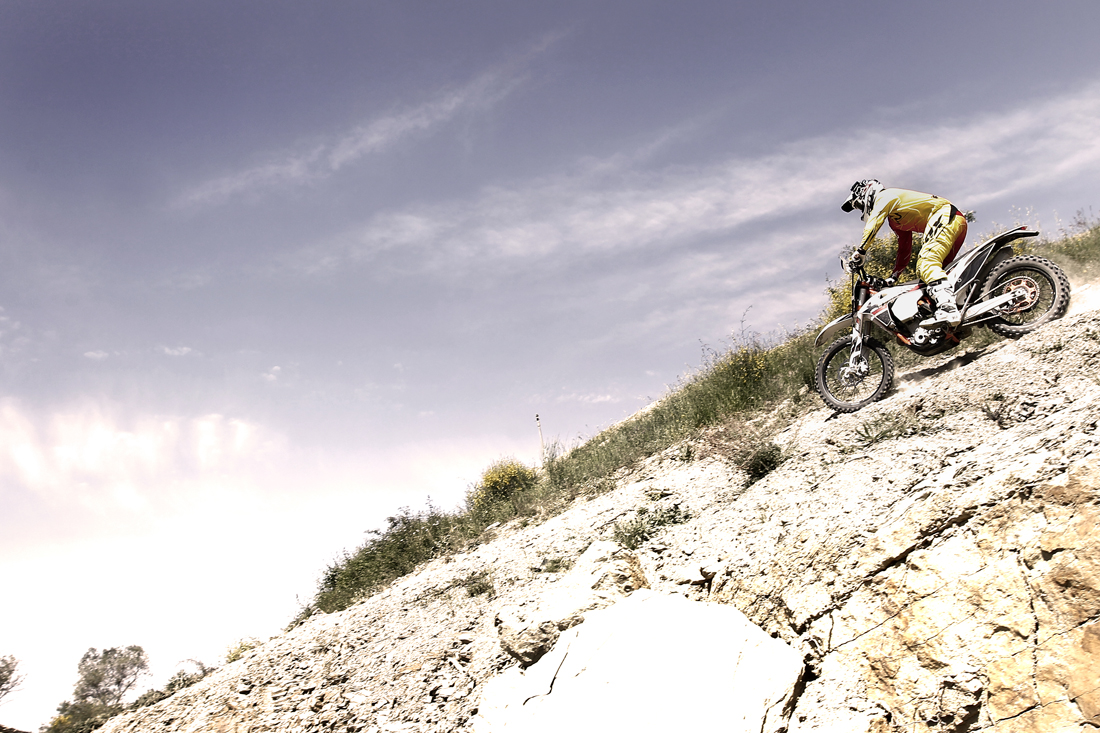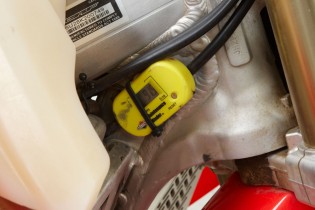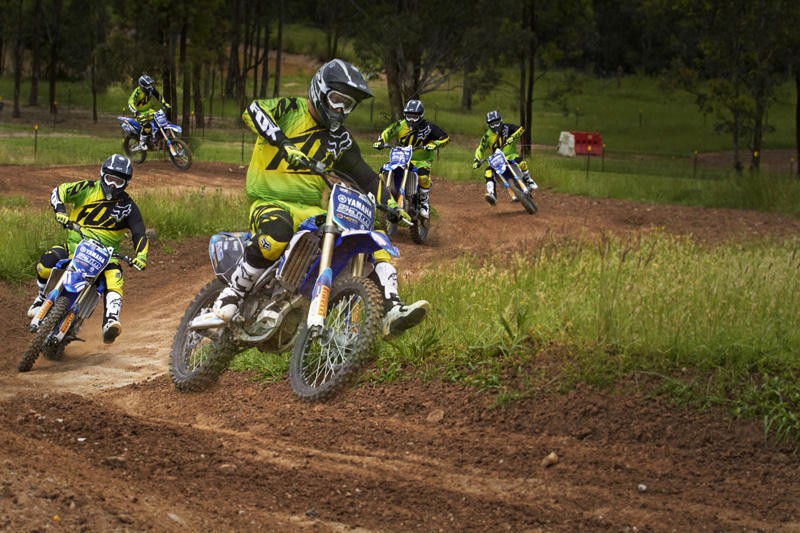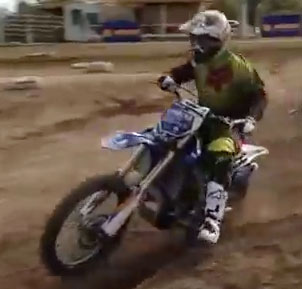
If you’re hitting the trails this time of year, chances are the mercury will have risen into the high 20s or early 30s at least. As the months roll into summer it’s only going to get hotter, so here are some tips to help you not only beat the heat but keep your bike running and stay safe, too
WORDS BY SHANE BOOTH | PHOTOGRAPHY BY HUSABERG/KTM
HYDRATION PACKS
CamelBak created a new industry when it worked out you could carry your drink on your back and access it easily through a tube. Sounds so simple. This is a must-have product for trail riding in general but when the temp rises you’d be silly to think of heading off without one. Opt for a three-litre pack if your budget allows; that way if you’re heading out on longer rides you can carry the full amount. For shorter rides, just don’t fill it to the top. I’ll bet you use the three litres even on relatively short rides — you’ll find the extra H2O will come in handy if you need to top up radiators or splash some on your face. There are other storage capacities available but try to stick with a size you’ll need rather than a big pack that you’ll never fill up. A bigger pack that isn’t getting used will just cover your back and be hotter to ride with.
HYDRATION SUPPLEMENTS
There are plenty of products available to help you fight off dehydration and some of the symptoms it produces and they are well worth using. They are designed to help your body absorb fluid more efficiently and also replace important vitamins and minerals that water alone will not. These specific ingredients can help your body keep functioning in the heat and also help fend off cramps on longer rides. They are best used during your ride to help replace the huge amounts of fluid you lose in all of your gear. The only downside to having a CamelBak full of hydration formula is sometimes you just want some water to rinse your mouth out or wash your face with. One thing I’ve done in the past is purchase an extra bladder and actually run two bladders in my CamelBak, one with hydration formula and one with water. I just run a tube over each shoulder — that way you have the best of both worlds.
RIDING GEAR
If you’re planning on riding right through summer it’s not a bad idea to look at investing in some specific hot-weather riding gear. It will be vented, allowing better-than-usual air flow which will help keep you cooler. You can get pants, jersey and even gloves, but if the budget is stretched go with just a jersey.
TINTED LENS
This depends a little on the type of riding you’re doing. If you’re heading into a heap of single track that’s dark and shadowy, a tinted lens may be too dark to see details. If it’s anything but that type of riding, on a hot sunny day you’ll be surprised at how a tinted lens can give you the perception it’s not as hot as it really is.
HYDRATE YOURSELF
If you know the temperature is going to be high, try to start hydrating a few days before the ride. Try to get through two to three litres of water a day in the day or two leading up to your ride. It will make a big difference once you gear up and hit the trails; you’ll enjoy your ride more and you’ll help your chances of not cramping.
EVAPORATIVE COOLING
What’s this, you may ask? It’s where you wet down your gear so when you start riding the breeze flows through and gives you a cooler feeling until it dries out. This technique works well on your jersey and even your helmet. If you do wet your helmet lining, make sure you squeeze out the majority of water otherwise you’ll add a kilo or two of weight to it. Don’t do this with your gloves if you can help it; wet gloves mean soft hands and on a long ride you can shred your palms to pieces.
KEEP YOUR BIKE COOL
Don’t forget about your bike in hot weather; the heat can cause just as many problems for it as it can for the rider. Always make sure your radiators are clear and free from any blockages. It only takes following a mate through one mud hole and copping a chunk of roost straight on the radiator or even just getting unlucky with some grass or leaves. Any blockage will cut a big percentage of the bike’s cooling ability. It might be OK on flowing trail but when you hit the next section of slow single track the bike can get hot and boil over. Even worse, it may just get hot enough that it slowly boils over and you don’t notice it until it’s too late. Be sure to check your coolant levels before your ride and during, if you stop for long enough. Make sure you let the bike cool to a safe temperature before you take off the radiator cap.
SIGNS OF DEHYDRATION
Here are some signs to look out for on a ride to tell if you’re starting to dehydrate. Usually, the first thing you’ll notice is you’re thirsty — at this point you are already slightly dehydrated. Cramping, headaches and struggling to maintain concentration are more signs that you’re becoming dehydrated. Don’t gulp a litre of water to fix it; just try to up your intake in small amounts to around 200mL every 20 minutes. If it’s a struggle to maintain concentration, make sure you pull up in some shade, get your helmet and boots off and try to cool down before continuing.
BUSHFIRES
Something to keep in mind when planning your ride is the fire danger and whether there’s a possibility of getting cornered if a bushfire flares up. If there’s a high fire danger, avoid heading into areas that have only one way in or out — a fire can block off a trail quicker than you think.




